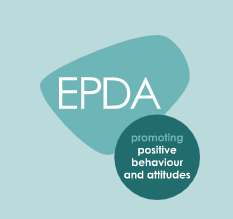Are you teaching your students creativity? Luke Ramsden suggests how to do so and discusses removing the fear of failure.

One way that schools can encourage creativity is by introducing design thinking as a structure for problem-solving. Design thinking is a process that involves:
Following this process, students learn to approach problems more creatively and systematically.
Design thinking can be applied to a variety of subjects. For example, an English language topic could ask students to create a school newsletter.
They would do the following.
As technology advances, humans need to continue developing their creative skills.
This sort of work differs starkly from the traditional examination format of students learning one correct answer to be repeated at the end of the year. It is far more reflective of the professional world that students will be going into.
An excellent website for exploring this method of working is the website for the Stanford Design school Tools for taking action.
There are many other ways that schools can encourage creativity. One is providing opportunities for students to collaborate and work on projects. Collaboration helps students learn from each other, and it can also help them come up with new and innovative ideas that they might not have thought of.
The most apparent nationwide programme that develops this element of creativity is the Duke of Edinburgh Award, with groups of students on expeditions required to come up with creative solutions to everything from navigating a safe route to working out how to cook outdoors in the rain.
Individual projects also encourage creativity by allowing students to work with various resources independently from their teacher. The Higher Project Qualification (HPQ) and Extended Project Qualification (EPQ) courses, along with a vast array of prize essays, can be found for students of different ages.
They provide these opportunities for students to work independently but with supervision, so schools can help them explore their creative interests and develop new skills.
More broadly, perhaps the most important thing schools can do is to make a sustained effort to create a positive and supportive learning culture that encourages creativity.
The key to this is providing a safe and welcoming space for students to work and, crucially, make mistakes without fear of failure. This is most important in fostering a culture of respect and appreciation for creative expression.
Schools can help them explore their creative interests and develop new skills.
As artificial intelligence and automation continue to advance, it is becoming clear that machines can now do many tasks that were once thought to require human intelligence. For example, ChatGPT, a natural language processing chatbot, can process written work and generate responses similar to a human.
While ChatGPT and other AI technologies can be helpful in many ways, they also highlight the importance of developing uniquely human skills, such as creativity. As technology advances, humans need to continue developing their creative skills, and schools have a key role to play in this process.

Develop pupil skills that last a lifetime and put pupils’ personal development at the heart of your school, with the Excellence in Pupil Development Award.